DARK MATTER - WHERE DID IT COME FROM?
All About Space
|Issue 112
It’s eluded us for decades, but bubbles could be the answer to the universe’s most mysterious substance

If something cast a shadow but you couldn’t see it, you’d be intrigued. If it did that on the scale of the universe, you’d be perplexed. If you then couldn’t find it despite your best efforts, you’d likely be frustrated. This is the situation that scientists looking for dark matter find themselves in. But dark matter doesn’t even cast shadows; it’s invisible to all electromagnetic radiation. And yet we have solid evidence that it exists. In fact, current calculations show that it comprises 80 per cent of all of the mass in the universe. Now a new study modelling dark matter as filtering through bubbles after the Big Bang may help point scientists in a new direction.
Although the mystery of dark matter can be traced as far back as Lord Kelvin, the modern breakthrough in research came in 1933. Fritz Zwicky was a Swiss astronomer working at the California Institute of Technology. Averaging the rotations of galaxies in the Coma Cluster, a large cluster of over a thousand galaxies, Zwicky noticed that their speeds were excessive. So much so, in fact, that the galaxies should have flown apart. There wasn’t enough visible matter to gravitationally bind each galaxy together. He concluded that there must be a ‘dunkle materie’ – or ‘dark matter’ – component to them, which he calculated to be 400 times what could be seen. Modern calculations have lowered this value.
Six years later, American doctoral student Horace Babcock showed dark matter present in the Andromeda Galaxy. Curiously, it was more concentrated in the periphery of the disc than the centre. This was the first indication that galaxies had dark matter ‘halos’. Then, in the late 1970s, American astronomers Vera Rubin and Kent Ford showed that galaxies contained between five and ten times more dark matter than luminous matter.
Bu hikaye All About Space dergisinin Issue 112 baskısından alınmıştır.
Binlerce özenle seçilmiş premium hikayeye ve 9.000'den fazla dergi ve gazeteye erişmek için Magzter GOLD'a abone olun.
Zaten abone misiniz? Oturum aç
All About Space'den DAHA FAZLA HİKAYE
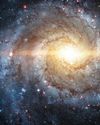
All About Space UK
MYSTERIES OF THE UNI WHERE ARE ALL THE SPIRAL GALAXIES?
There are far fewer spiral galaxies than elliptical ones in the Supergalactic Plane, and scientists are keen to discover why
7 mins
Issue 161
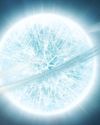
All About Space UK
ZOMBIE STARS
+10 OTHER TERRIFYING SPACE OBJECTS
8 mins
Issue 161

All About Space UK
HOW TO BEAT LIGHT POLLUTION
Thought it was impossible to observe the wonders of the night sky from towns and cities? Think again. Follow our tips and tricks on successfully observing through sky glow
2 mins
Issue 161
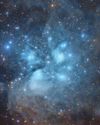
All About Space UK
15 STUNNING STAR CLUSTERS
These beautiful stellar groupings are spattered across the cosmos
8 mins
Issue 161

All About Space UK
Eileen Collins "It was a difficult mission...we were the first to see Mir"
Having served as both the first female pilot and first female commander of NASA's Space Shuttle, Collins boosted the involvement of women in space exploration to a whole new level
9 mins
Issue 161

All About Space UK
MARS LEAKS FASTER WHEN IT'S CLOSER TO THE SUN
The Red Planet has lost enough water to space to form a global ocean hundreds of kilometres deep
2 mins
Issue 161

All About Space UK
FUTURE TECH KANKOH-MARU
This ambitious reusable spacecraft will be capable of taking 50 people to and from orbit
2 mins
Issue 161

All About Space UK
THE FINAL FRONTIER
Beyond the reach of the Sun is a fascinating region of the cosmos that were only just beginning to explore
8 mins
Issue 161
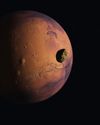
All About Space UK
A long-lost moon could explain Mars' weird shape and extreme terrain
A long-lost moon could explain why Mars is so different from the other rocky planets in the Solar System. Today Mars has two tiny moons.
2 mins
Issue 161
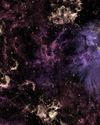
All About Space UK
A sprinkling of cosmic dust may have helped kick-start life on Earth
Cosmic dust may have helped kick-start life on Earth. New findings challenge a widely held assumption that this wasn't a plausible explanation.
3 mins
Issue 161
Translate
Change font size

